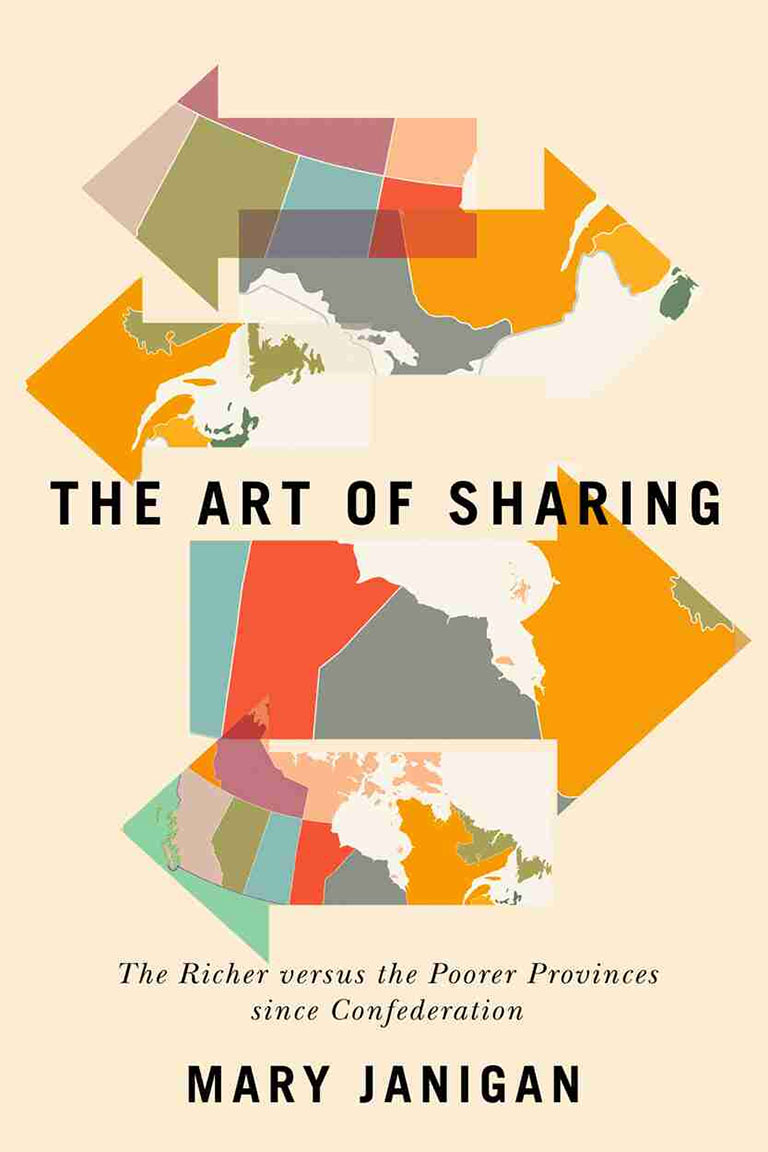The Art of Sharing

The Art of Sharing: The Richer versus the Poorer Provinces since Confederation
by Mary Janigan
McGill-Queen’s University Press
432 pages, $39.95
Sharing family wealth can be tense and infuriating, as some may know from administering a will. Sharing a nation’s wealth is even more difficult, especially if riches or poverty are regionally concentrated and revenues shift with changing demand for local products. Financial equalization is Canada’s main solution to spreading wealth between have and have-not provinces. It is also the topic of Mary Janigan’s superb new book.
Put more precisely, financial equalization is the sensitive arrangement that enables all provinces to provide reasonably similar levels of public services for reasonably similar levels of taxation. It is, Janigan says pointedly, “the improbable glue that holds the nation together.” This equalization involves transfers of cash, with the federal government serving as banker and referee. The allocations are intended to balance what each province can expect to collect from its own revenue sources — hence the title and theme of this book: The Art of Sharing.
Transfers to provinces, currently worth about $20 billion, require economic calculations that are immensely complex and, some would say, deliberately obscure. Redistributing wealth is always touchy, all the more so when so much is at stake.
Janigan is a journalist who has recently completed a Ph.D. in history at York University. This compact volume, based on her thesis, is rarely academic in style, though it includes many footnotes. Janigan sets out to answer one question: How did Canada’s policy of equalization come into being? She proceeds to explain its significance, drawing on historical records and first-hand accounts of living conditions and social problems. She relates policies to real people, writing with the ease of a professional reporter.
This is a voyage across time, starting with Confederation and its tough financial negotiations. Every founding province received payments from the new Dominion government in return for giving up former colonial revenues, notably from trade tariffs. But, early on, the Maritime provinces complained vociferously that their payments were too small.
The Maritimes received many supplementary Ottawa grants, with decisions made in an ad hoc manner. These were key to Confederation’s early stability. In later years, when the prairies suffered from poor harvests and falling grain prices, extra federal money was also essential. Arguably, the sums were never sufficient.
During the Second World War, when military expenses ballooned, it was the central government that needed additional revenues, leading to a complex system of “tax leasing.” This mindnumbing arrangement, negotiated province by province, involved the transfer of all tax revenues to the Dominion government while operating grants were allocated back to the provinces.
Tax leasing was never a recipe for harmony. A different policy was needed, and this was emphasized in the seminal 1940 report of the Rowell-Sirois Royal Commission. But government negotiations hit an impasse in the postwar period and were complicated by conflicting provincial demands, Ottawa’s ideas on centralization, and Quebec’s passionate defense of its jurisdiction. A solution finally emerged in the mid-1950s, under Prime Minister Louis St. Laurent. That new approach is described by Janigan as “the miracle of equalization.”
Why were these transfers so important to the lives of Canadians? Sufficient funding for both the provinces and Ottawa was the essential foundation for a modern welfare system that incorporated features such as income support for seniors and public health insurance. “The federal government had finally found a non-intrusive way to remedy … inequality among the provinces,” Janigan concludes.
Another dimension of her study is its examination of Australia’s funding disputes. Janigan draws parallels to Canada and describes how Australia dealt with its own federal grants challenge, responding to a regional separatist threat. Decision makers in both countries were aware of their similar predicaments, though it is not clear how much they actually learned from each other.
St. Laurent emerges as the hero in Janigan’s eyes. She credits him with being an effective negotiator, a centralist visionary who realistically compromised on provincial rights while managing the puzzle of Canada’s regional identities.
Janigan’s account alludes to contemporary pressures, and she even shifts at times to current phrases (“First Ministers” or “Rest of Canada”) that don’t fit easily in a historical study. But her crystal-clear account prepares us for possible turbulence ahead. As regional wealth and provincial revenues shift again, Canada’s equalization system will be an essential tool for divvying up the pie and for evening out winners and losers.
Themes associated with this article
Advertisement

Our online store carries a variety of popular gifts for the history lover or Canadiana enthusiast in your life, including silk ties, dress socks, warm mitts and more!




